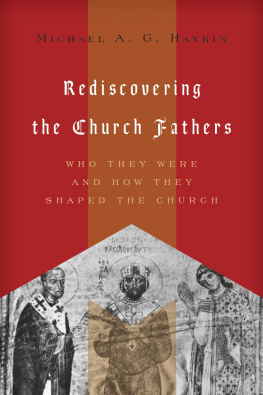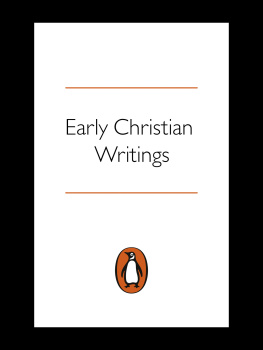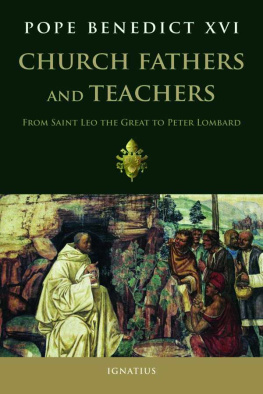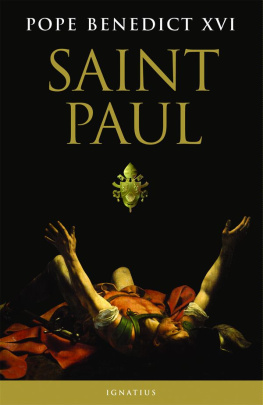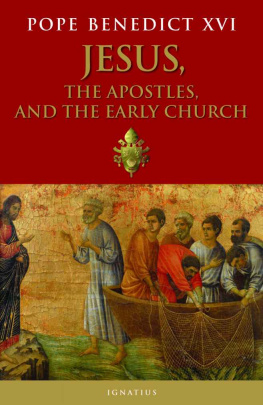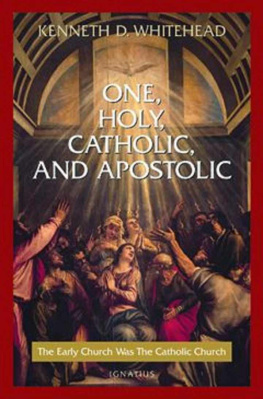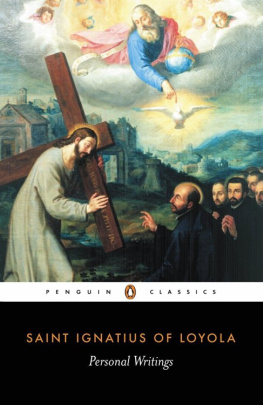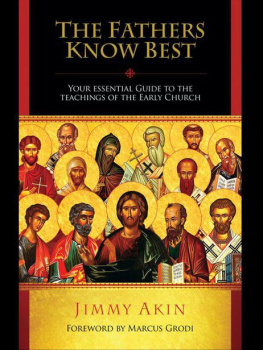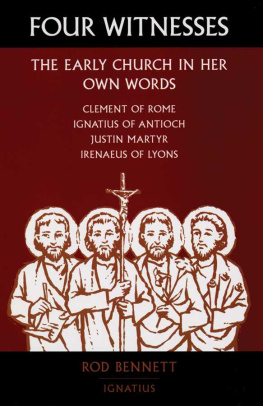Table of Contents
{L1}
Preamble

{L2} Ignatius of Antioch and Polycarp of Smyrna
{L3} A New Translation and Theological Commentary
Revised and Expanded Edition
Kenneth J. Howell
Early Christian Fathers Series: 1
{L4} CHResources
PO Box 8290
Zanesville, Ohio 43702
740-450-1175
CHResources is a registered trademark of
The Coming Home Network International
{L5} (C) 2009 by Kenneth J. Howell
All rights reserved. Original edition published 2008
Revised and expanded edition published 2009
Printed in the United States of America
13 12 11 10 09 1 2 3 4 5
The material on Ignatius of Antioch was previously published
under the title Ignatius of Antioch A New Translation and Theological
Commentary (Zanesville OH: CHResources, 2008)
{L6} ISBN 978-0-9800066-5-0
Library of Congress Cataloging-in-Publication Data
Ignatius, Saint, Bishop of Antioch, d. ca. 110.
[Correspondence. English]
Ignatius of Antioch and Polycarp of Smyrna :
a new translation and theological commentary
Kenneth J. Howell. -- Rev. and expanded ed.
p. cm. -- (Early Christian Fathers series ; 1)
Includes bibliographical references and indexes.
ISBN 978-0-9800066-5-0 (alk. paper)
1. Ignatius, Saint, Bishop of Antioch, d. ca. 110 -- Correspondence.
2. Apostolic Fathers -- Correspondence.
3. Theology -- History -- Early church, ca. 30-600.
4. Polycarp, Saint, Bishop of Smyrna. I. Title.
II. Title: Ignatius of Antioch and Polycarp of Smyrna.
III. Series.
{L7} BR65.I3E5 2009
270.1092'2--dc22
2009036110
{L8} Cover Design by Jennifer Bitler www.doxologydesign.com
Book layout by Mary Clare Piecynski
Electronic edition by Marpex Inc., Steubenville Ohio
Dedication
{L9} Ad redintegrationem unitatis
omnium Christianorum dedicatum
Preface
{L10} To the attentive reader of early Christian writings, the names of St. Ignatius of Antioch and St. Polycarp of Smyrna stand as powerful witnesses to the life of the church in the second century. Outside the canon of the New Testament few leaders of the early church have given us so much clarity about the life of Christians of that period. A man who probably knew some of the apostles themselves, Ignatius became the second or third bishop of Antioch in Syria. Martyred in Rome some time during the reign of the emperor Trajan (98-117), Ignatius's seven authentic letters give us snapshots of the faith and life of the churches of Asia Minor in a manner that is equaled only by the Acts of the Apostles and the seven letters of the Apocalypse. More is known about the life and martyrdom of Polycarp but fewer of his letters have survived antiquity. Polycarp, the bishop of Smyrna, was martyred around the mid-second century. Ignatius passed through Smyrna around 110 en route to Rome. Together, they give us unique insights into the theology, church practice, and hope of early Christians.
{L11} St. Ignatius has been celebrated and his letters studied with great diligence for centuries. Yet, despite numerous translations into modern languages, commentators on Ignatius have not always understood the broader and deeper theology that underlies his writings. Like St Paul's letters in the New Testament, Ignatius's epistles were "occasional writings" (Gelegenheitschriften) penned while en route to Rome. They are not anything like the systematic treatises of theology that we find later in the second century (e.g. Irenaeus of Lyons, Against Heresies) but they are examples of the high regard the ancients had for writing exemplary instructional epistles. Behind and within these letters, however, lies a profound theology that was to become seminal for later Christian thinkers. In Ignatius's writings we stand at the source of a long tradition that still shapes Christianity today in both the East and the West. The translations and commentary contained in this book are designed to lay bare that Ignatian theology.
{L12} Ignatius has endured the vicissitudes of centuries of scholarship. At one extreme, there is the naive acceptance of writings ascribed to him (in the so-called long recension, e.g. Letter to Mary) which scholars now universally agree are not authentically his. The other is an atomistic hyper-historicism that makes Ignatius not only of questionable relevance today but even irrelevant to understanding the wider spectrum of Christian belief and practice of his own time. Professional scholars of early Christianity show a marked tendency to treat each of the earliest Fathers as individuals whose theology was not necessarily shared by others of that time. This, of course, is somewhat difficult to discern in the case of Ignatius because there are so few of his strict contemporaries available to us. The Didache and the Letter to the Philippians by Polycarp are some of the closest witnesses we have to the time of Ignatius.
{L13} Polycarp, like Ignatius, can boast a long history of study by scholars and general readers of early Christianity. However, the only document surviving from his pen, his Letter to the Philippians, does not display the theological profundity of Ignatius's letters. Consequently, many scholars have found his work less interesting and worthy of attention. This is a hasty judgment in my estimation. While his only letter bears the marks of pastoral concern rather than theological acumen, it draws on the rich fount of Paul's theology in the New Testament, as Kenneth Berding as recently shown. We may also be justified in making some inferences about Polycarp's teachings from the Martyrdom of Polycarp, a document dating most probably from the early third century. This account of the death of the bishop of Smyrna still today ranks as one of the most moving and inspiring martyrologies from the second century.
{L14} Every student of the early church fathers, like any scholar doing historical research, must necessarily bring certain presuppositions to the study. Often there is an implicit community of readers that each scholar is addressing, which tends control his interpretations. I am, of course, no different. I have chosen to emphasize the affinities between Ignatius and Polycarp on the one hand, and the writings of the New Testament on the other. The theology of Paul, the most important writer in the canonical New Testament, looms large. We will see that there is a natural and almost expected development from the early catholicity of the later writings in the New Testament (e.g. the Pastorals) to these bishop-martyrs. While most available editions of Ignatius and Polycarp cite passages from the New Testament which they allude to or quote, many current translators have not explored those connections as deeply as one might.
{L15} A commentary should above all else explain the text in terms a modern reader can understand. This is a much more challenging task than appears at first. Through many years of teaching I have learned that few readers really plumb the depths of the patristic writings, even those that seem straightforward. Like St. Paul in the New Testament, there is much more to Ignatius and Polycarp than meets the eye. In many aspects of their thought, but especially in their fervent longing for martyrdom, Ignatius and Polycarp seem like men from a different and distant world. I have taken it as my task not only to make these men understandable to the modern reader but even more to engender a desire to be like them. For me, Ignatius and Polycarp are not simply objects of scholarly inquiry. For me, they are Saints, men in whom the desire for martyrdom represents the most profound expression of love for Jesus Christ. This love for Christ explains their pastoral solicitude, their love of the Eucharist, and their concern for unity within the churches. They are not only authors to be read; they are men with whom one can converse. I invite the reader into this conversation with the hope that it will engender that same love of Jesus Christ and the church that so burned in the souls of Ignatius and of Polycarp.


